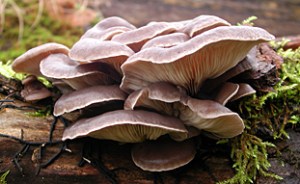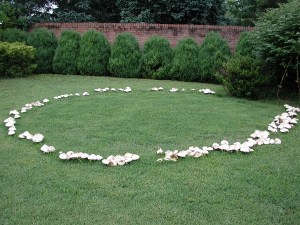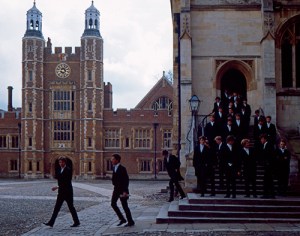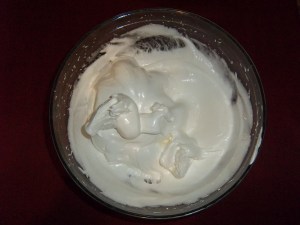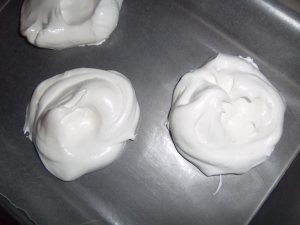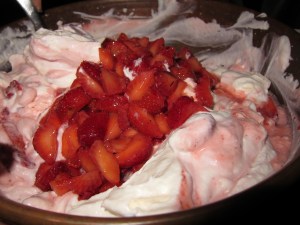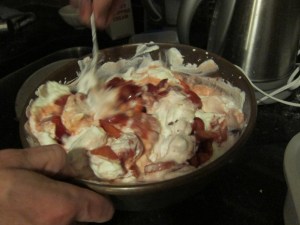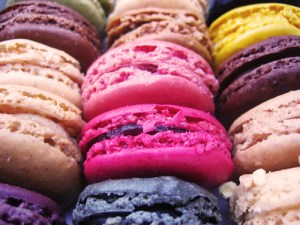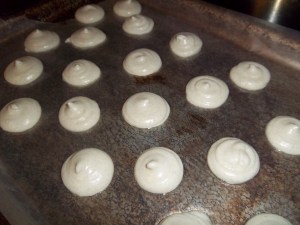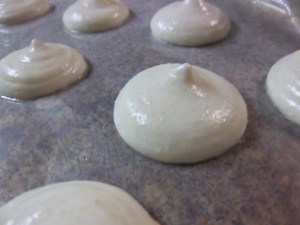Autumn is nearly upon us and that means it will soon be mushroom season. I haven’t much experience with gathering mushrooms myself, but have found them in the past when walking in the woods. I reckon there are only about five types I can identify and be 100% sure I know what they are. When you do see some that you know, it is very exciting to collect them and bring them home. There is, apparently, a mushroom-collectors’ club in St Louis, so I shall be checking that out.
Oyster mushrooms are easy to find – they grow on dead beech trees
Jew’s ear fungus is less well-known, but very easy to identify
Our relationship with mushrooms goes back a long, long way; mushrooms were consumed by Paleolithic man ten thousand years ago. Fungi, then as now, were not just used as food, but also as poison and for their narcotic effects.
Field and woodland mushrooms were highly-prized; it is odd to think that oysters were once used as a cheap mushroom substitute. These days, the basic mushroom is the closed cap cultivated kind, which was only grown on a large scale in the nineteenth century, so it is obvious why they were so highly sought-after. This was only in Britain though, the Romans managed to cultivate them way back when, as did the French a century before we British. We were just a bit slow on the uptake there, I suppose.
Mushrooms also were thought to be magical: they cause the familiar fairy rings you see during rainy periods in late summer and seemed to appear from nowhere. The first century Greek physician Dioscorides, suggested throwing the shredded bark of the poplar tree over compost to obtain mushrooms ‘spontaneously’ by ‘the grace of the gods’. In the Middle Ages, mushrooms were officially pronounced magical, and it was up to the alchemists of the day to try and discover the secret of creation from them (they must’ve become frustrated with the turning base metals into gold thing).
A fairy ring of mushrooms
Mushrooms have been used to give food an interesting meaty and earthy flavour to food. The reason they are so good for this job is that they all chock-full of umami – the recently-discovered fifth taste. Cooks in the eighteenth century made a lot of mushroom ketchup and mushroom powder for seasoning food, and I will make some myself eventually and put the results on this blog.
I love mushrooms of all kinds, so I thought I would give a couple of recipes – one historical, and the other a British classic.
Alexis Soyer (1810-1858)
The first is from a book called Shilling Cookery for the People by Alexis Soyer, published in 1854. He was the first celebrity chef and I am sure he’ll get a posting all to himself at some point. He happened upon some tasty field mushrooms and tells us the story of how he came up with a recipe for those ‘pearls of the field’:
“Being in Devonshire, at the end of September and walking across the fields before breakfast to a small farmhouse, I found three very fine mushrooms, which I thought would be a treat, but on arriving at the house I found it had no oven, a bad gridiron and a smoky coal fire. Necessity, they say, is the mother of Invention, I immediately applied to our grand and universal mamma, how should I dress my precious mushrooms, when a gentle whisper came to my ear… The sight when the glass is removed, is most inviting, its whiteness rivals the everlasting snows of Mont Blanc, and the taste is worthy of Lucullus. Vitellius would never have dined without it; Apicius would never have gone to Greece to seek for crawfish; and had he only half the fortune left when he committed suicide, he would have preferred to have left proud Rome and retire to some villa or cottage to enjoy such an enticing dish.”
I have reported this recipe in the other blog with Jane Grigson’s modifications for making the delicious dish yourself in a modern oven. Click here for the recipe. Try it – you will not be disappointed, no siree.
If you like the blogs and podcast I produce, please consider treating me to a virtual coffee or pint, or even a £3 monthly subscription: follow this link for more information.
For some crazy reason there is no recipe for Cream of Mushroom Soup in Jane Grigson’s English Food. I do not know why this is because when I was thinking about recipes that were omitted from the book, it was one of the most glaringly obvious absentees. As you may know, it is one of the reasons for doing this blog – compiling recipes that were missed out of English Food. This recipe is one of my staples and is from Lindsey Bareham’s excellent book A Celebration of Soup. It is delicious and very quick to make and uses the old-fashioned way of thickening soups with the use of old bread.
Ingredients:
2 oz stale white bread
milk
1 lb mushrooms, finely chopped (any kind, but Portobello mushrooms are the best for this)
2 oz butter
1 clove of garlic, finely chopped
2 tbs finely chopped parsley
salt, pepper and nutmeg
1 pint of chicken or vegetable stock
4 fl oz double cream
Place the bread in a dish and pour enough milk over it to make it nice and soggy. Melt the butter in a saucepan and add the mushrooms.
Cover, and simmer for five minutes. Squeeze the milk out of the bread, break it up and add it to the pan along with the garlic, parsley and the seasonings (don’t be tight with that nutmeg, folks) before pouring the stock over the lot. Bring to a boil, and turn the heat down to a simmer and cook for a further ten minutes. Pop the soup into the blender, return to the pan, stir in the cream and bring back to the boil. Easy!
If you want to do a low-fat version, use some fat-free cream cheese like Quark, or just use milk instead of cream.
That’s enough mushroom talk for now, I think….

